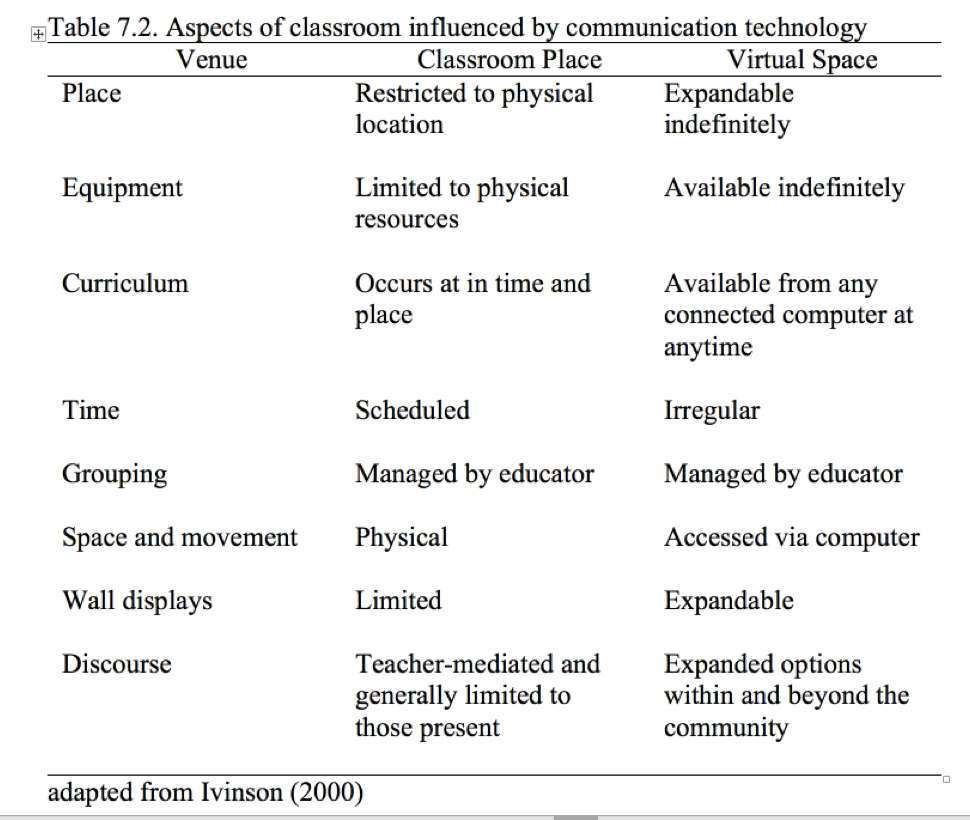One of the fundamental changes influencing the emergence of technology ecosystems has been the transition from ICT being used to access information to it being used for interaction. Discourse and interaction are fundamental components of learning environments, as well.
When investigating the different venues in the classroom that are available for communication, and thus that are potentially influenced by ICT and that must be accounted for when creating hybrid classrooms, Gabrielle Ivinson (2000) identified eight aspects of classroom places that affect how educators and students interact, and these all have the potential to be affected by ICT and ICT-mediated interactions (see table 7.2). While management of those venues in classroom places are well-established and familiar to educators, in virtual spaces, the dynamics of the information and interactions become more dynamic and educators have more options.
The nature of the interactions that characterize a learning environment depend not only on how Ivinson’s eight aspects of classrooms are designed, but also on the culture of those places and spaces. The experiences and expectations of both the students and the teachers, the details of how curriculum expectations are communicated and measured, and both students’ and teachers’ perceptions of the purpose of the activities, as well as perceived social norms all contribute to the nature of learning interactions and the learning that occurs. Strange and Banning (2001) observed that interactions can create environments that encourage every learner to adopt similar methods to solve problems following authority (embodied by the teacher) and that maximizes achievement and minimizes risk-taking. Alternatively, Strange and Banning observed interactions can be managed to create developmental environments in which students are encouraged to assume responsibility for creating unique solutions, and flexibility and risk-taking are encouraged. When creating ICT-rich learning places and spaces that encourage the flexibility and risk-taking necessary for developmental environments and also that reflects the context-rich problems that are the focus of authentic learning tasks, educators will ensure that ICT facilitates interaction as much as ICT facilitates information access which is its traditional role in the classroom.

Reference
Ivinson, Gabrielle. 2000. “The Development of Children’s Social Representations of the Primary School Curriculum.” In Social Interaction in Learning and Instruction: The Meaning of Discourse for the Construction of Knowledge, edited by Helen Cowie and D. van der Aalvoort, 67-92. Kidlington, Oxford: Elsevier Science.